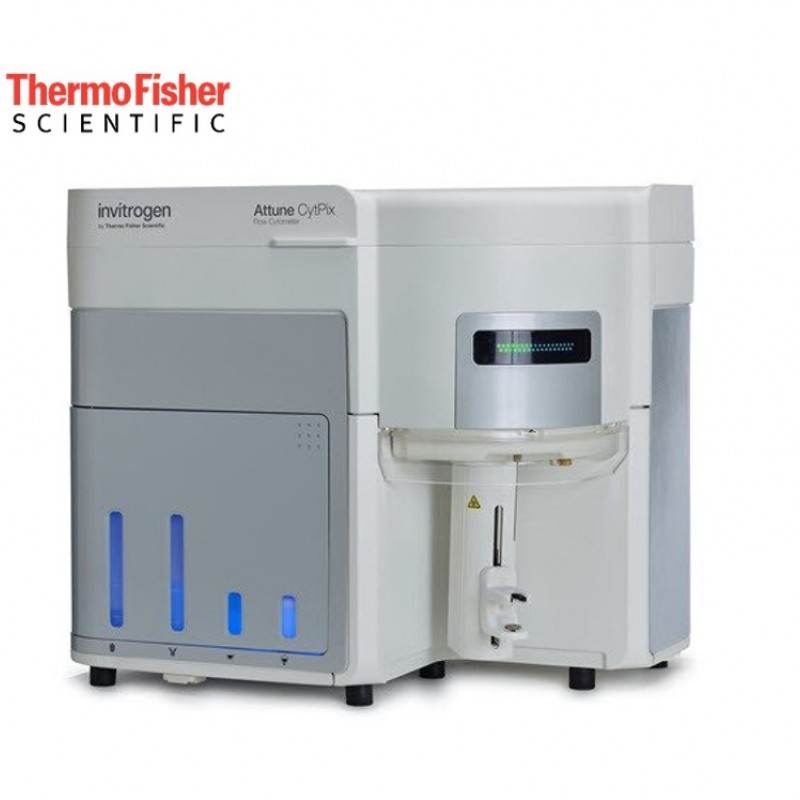
Its distinguishing feature is a high-speed brightfield camera that records images of individual events as they pass through the flow cell. The camera and Attune Cytometric Software help to ensure that the events you analyze are single cells as opposed to doublets, clumps, or debris. This is crucial in cell and gene therapy research applications, but is useful in almost any flow cytometry experiment to help researchers understand the morphology of each cell population identified for analysis. The images can also aid in identifying debris and optimizing protocols.

Acoustic focusing positions cells for optimal imaging
Without acoustic focusing , beads appear off-center and often blurry. Acoustic focusing reduces lateral position variation, temporal variations, and depth of field limitations to obtain a sharp image.

Optical focus is maintained regardless of the sample flow rate. You can image events at flow rates up to 1,000 µL/minute, and adjust the focus, imaging window, and illumination settings to your target cell type.
Capturing images of cell populations as you acquire flow data lets you select cell images and backgate them on the dot plot or histogram. This allows you to adjust your gates to include cells of interest while excluding aggregates, unwanted cells, and debris. You can combine data from the integrated cell measurement tool with fluorescence and light scatter cytometry to set and confirm gates.



Discover analysis opportunities.
Backgating imaged cells on the Attune CytPix Flow Cytometer also allows you to use morphological features to discover interesting subpopulations that would not be apparent from flow cytometry data alone.
For example, E. coli cells incubated over time develop into two types of colony-forming units (CFUs): short CFUs that resemble single cells, and elongated structures with incomplete fission rings, representing incomplete constriction at each approximate cell length. Neither a traditional singlet gate (SSC-A vs SSC-H) nor a fluorescence gate (SSC vs nucleated stain) sufficiently separates these populations. But with the Attune CytPix imaging-enhanced flow cytometer, you can view and group the images and gate the CFU types based on their morphological characteristics.

Cell culture QC. Adding rapid imaging to quality control (QC) workflows can detect and track down cell culture issues early in the process. In one lab, for example, a routine passage check of a Ramos (lymphoma) cell culture observed reduced cell counts and survival despite appearing confluent. Further investigation revealed substantial microbial contamination, but when and where did it begin?
Because the cell line had previously been analyzed on the Attune CytPix Flow Cytometer, the researchers went back to the images and were able to document the microbial infection at least five days earlier. At that time, the early signs were dismissed as debris, but the retrospective evaluation demonstrated shared characteristics with the problematic cells in culture. Tracing the infection helped the lab establish additional laboratory procedures for screening and protection of assay-critical cell lines.
